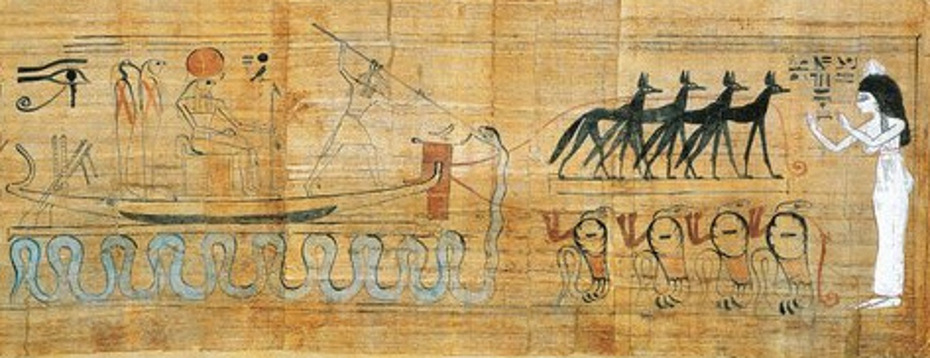- Retour accueil
- Vous êtes ici : Blog The Great Pyramid of Khufu
Tous les articles Actualités Ancient Egypt Chemistry in Ancient Egypt La Grande Pyramide d'Égypte Nouveauté The Great Pyramid of Khufu The Great Pyramid of Khufu / Dendera Temple The Pyramids of the Cold The Pyramids of the Cold v2
The Great Pyramid of Khufu

Akhenaten and Nefertiti represented themselves as Shu and Tefnut, the deities that combined together created the evaporative cooling in the Great Pyramid of Khufu ©2021
Publié par Bruno Coursol dans The Great Pyramid of Khufu le 02/12/2021 à 14:49
King Akhenaten was an ancient Egyptian pharaoh of the Eighteenth Dynasty who abandoned Egypt's traditional polytheism for Atenism, a worship centered around one single god : Aten. But at the ...Lire la suite
The Hidden Hauling Cavern of the Underworld ©2021
Publié par Bruno Coursol dans The Great Pyramid of Khufu le 17/11/2021 à 14:17
The Amduat, literally "That Which Is In the Afterworld", also translated as "Book of the Hidden Chamber Which is in the Underworld" and "Book of What is in the Underworld"; ...Lire la suite
Wedjat Eye of Horus Falcon Headed God of the Sky and the 80 years conflict with Set refer to the natron manufacturing failures before evaporative cooling was mastered ©2021
Publié par Bruno Coursol dans The Great Pyramid of Khufu le 10/10/2021 à 23:28
The Wedjat Eye of Horus (œil Oudjat) is an ancient Egyptian religious representation of the Falcon Headed god of the Sky Horus. It represents the disc of Sabu, inserted inside ...Lire la suite
The endless fights between Sun god Ra and the Great Serpent god Apep (Apophis) in the Underworld are representations of the grand gallery impactor operating cycle of the Great Pyramid of Khufu ©2021
Publié par Bruno Coursol dans The Great Pyramid of Khufu le 24/09/2021 à 08:40
Apep (also Apophis) was the Great Serpent ancient Egyptian god of Chaos (isfet) that reigned over the Underworld and fought sun and creator god Ra in his solar barque (also ...Lire la suite
Imhotep's Pyramid of the Cold and the Horus Figures holding the Fog Nozzle of the Great Pyramid of Khufu Horizontal Cooling Passage ©2021
Publié par Bruno Coursol dans The Great Pyramid of Khufu le 17/09/2021 à 17:40
Horus, the falcon-headed god, is an important ancient Egyptian god that has become one of the most commonly used symbols all over Egypt. Horus's name means "he who is above" ...Lire la suite
The Ptah-Sokar-Osiris Figures are representations of the moving caisson and its granite weight that were operated inside the Grand Gallery at the Great Pyramid of Khufu ©2021
Publié par Bruno Coursol dans The Great Pyramid of Khufu le 21/08/2021 à 08:30
The rectangular shape empty of any decoration on the base of the Ptah-Sokar-Osiris figurine (highlighted in red), indicates where was inserted the granite weight that transformed the caisson into a ...Lire la suite
à votre Service Depuis maintenant 14 ans
Satisfait ou remboursé: 14 jours pour changer d'avis
02 98 29 15 83
Votre Service Client est ouvert du Lundi au Samedi de 8h30 à 18h
Paiement sécurisé
Cryptage SSL: commandez par Carte Bancaire en toute sécurité
Commande chouchoutée
Préparation soignée & Livraison rapide